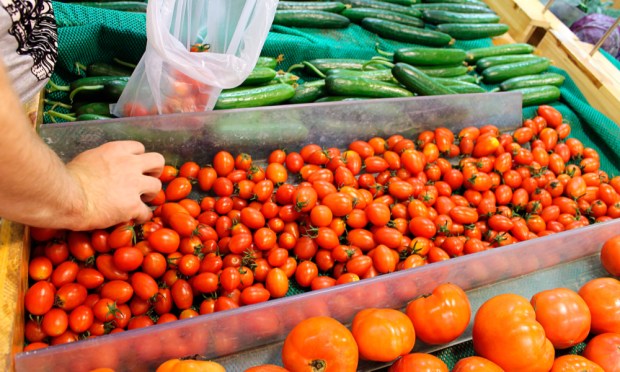FoodMaven On Food Distributors’ Pivot To B2C

The current COVID-19 crisis has trained a spotlight on what happens when the means of how we satisfy the most basic of needs – getting enough food to eat – are upended.
Never was that more apparent than just a few weeks ago, when supermarket shelves were laid bare of everything from meat to pasta to eggs.
More recently, an untold number of eateries have shuttered across the U.S., in a bid to stop the spread of the virus by keeping people from gathering socially.
In an interview with Karen Webster, Ben Deda, CEO of online marketplace FoodMaven – which sells oversupplied and “imperfect” food from distributors, manufacturers and producers to restaurants and institutional kitchens at a discount – said that traditional food supply chains are not equipped to pivot and get food to people who may need it most when crises hit. These people may not always be able to get what they need at the grocery store, he pointed out.
In recent days, FoodMaven has brought its model to the retail side of commerce. Customers – now numbering several hundred, according to Deda – can order online for delivery or pickup at the company’s warehouse. Through its B2B channel, FoodMaven seeks to reduce food waste, in part by donating unsold food to hunger relief organizations in Colorado.
The need for an agile supply chain underpinned by tech-driven logistics is apparent, said Deda, as the traditional means of distribution can’t keep pace with dynamic environments. He pointed to consolidation in the packing industry and lack of flexibility in orders (and order sizes), which has led to oversupply and imbalances in, for example, what inventory a distributor holds.
Pricing and quantity are set well in advance as items make their way from farms through the distribution channels, which also lead to inefficiencies, Deda said.
As far as where the food supply chain may be headed, Deda offered an analogy of how the auto industry transformed a few decades ago, where batch manufacturing eventually gave way to lean manufacturing processes embraced by firms like Toyota.
There’s a ways to go before we get there in the food industry, he said – in the States alone, we throw away about a billion pounds of food annually.
Where We Are Now
In the meantime, asked by Webster whether restaurants in the markets served by FoodMaven are still ordering, Deda said that in a significant number of cases, establishments have simply shut their doors in an effort to weather the storm.
Elsewhere, local governments have let restaurants supplement their takeout sales by granting “limited retail” licenses that let them offer groceries to their customer base. For the most part, they’ve been ordering the same produce and meats they’ve traditionally bought, said Deda – just in smaller quantities.
“You see folks trying a lot of different things to still be able to help serve a need,” he noted.
The shift toward offering a direct-to-consumer model has given rise to some operational changes at FoodMaven, Deda told Webster. For one thing, on the B2B side, SKUs number in the thousands; at present, the retail-facing operation has about 10 SKUs across meat and poultry.
“It doesn’t require massive changes to our systems,” he said, adding that FoodMaven recently rolled out a new online ordering system powered by B2B eCommerce platform OroCommerce.
Pricing is rounded up to “whole” dollars, so there are no worries about making change, said Deda. This allows the company to take payments that are not limited to card transactions. Some of the firm’s retail clients, after all, may not actually have access to credit cards and need to pay in cash.
Individuals and families have been altering their own consumption habits. Deda recounted that consumers have been buying 60-pound boxes of meet that contain 30-pound ribeye steaks, freezing part of that order and sharing the meat with friends.
He predicted that the bounce-back for restaurants will be “massive” once the scourge of COVID-19 passes. That human need to gather together, break bread and raise a glass will always be there, even if the pandemic winds on for months.
“I think all of us are going to be pretty tired of eating at the table with the same three to seven people every single day when this is all said and done,” Deda told Webster.
